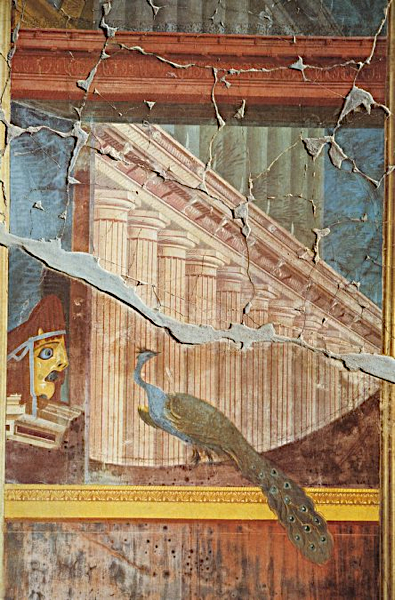
| ||
| Level 100 | ||
|
| ||
| Level 200 | ||
|
| ||
| Level 300 | ||
|
| ||
| Level 400 | ||
|
| ||
| Level 500 | ||
| ||
| Level 600 | ||
|
| ||
| History of Art | ||
| LS&A | ||
| University of Michigan | ||
| Back to the list of courses |
Ancient Monumental Painting

In the ancient civilizations of the greater Mediterranean region, large-scale paintings decorated the walls of palaces, houses, tombs and public buildings, often in celebration of their patrons' lives, achievements, and cultivated tastes. Also prized were painted wood panels. Some were kept in shuttered cabinets and shown only to special guests. Others, like Fayoum portraits, commemorated the deceased in life and accompanied them to the eternal world of the grave. After a very brief introduction to the traditions of monumental painting developed by the ancient cultures of the Mediterranean world, this course will focus on the wall and panel paintings of the Roman era. Paintings from Rome, Pompeii, Herculaneum, and Ostia provide the core of visual material, but paintings from the Roman provinces will be discussed as well. This course will pay special attention to the meaning of images in light of their public and private contexts, their patrons' social concerns, and their historical/archaeological settings. The majority of images to be discussed represent gods and goddesses, heroes and heroines, mortal men and women, children and slaves, scenes of daily life, religious, and political subjects, landscapes, gardens and still life. Lectures and class discussion will also take account of a number of issues that are prominent in the study of Roman painting—for example, the relationship of Roman imagery to Greek models, the potentially wide range of viewers of Roman paintings and the meanings that different viewers might have found in the images, the chronology of the four Pompeian styles, and the reception of Roman paintings in modern times. Hands-on study of fragments of actual Roman paintings in the Kelsey Museum's collection, will teach students about the materials and technical processes of Roman wall painting and about problems and methods of reconstruction, interpretation, and transmission. Readings for twice weekly class discussions and lectures will be drawn from R. Ling, Roman Painting (1991), J.J. Pollitt, The Cambridge History of Painting in the Classical World (2014), and articles posted on Canvas. Daily responses paragraphs and in-class presentation and short (3-4 page) paper to be prepared during the first half of the term will be followed by an 8-page research paper in the second half. Midterm and final examinations will be based on slide attributions and essays. Graduate students who enroll in HistArt/ClArch 534 will be required to do additional readings and write a longer in depth research paper.
No mandatory field trips outside Ann Arbor.
Estimated cost of materials: $50 or more, but less than $100.
Advisory Prerequisites: None
Textbook/Other Materials: Readings for this course will be on reserve in the Fine Arts Library and/or posted on Canvas.
Course requirements: Class attendance and active participation: 20% of total grade; two class presentations accompanied by short papers: each 20% of total grade, midterm examination: 15% of total grade; and final examination or project: 25% of final grade. Graduate students enrolled in this course must write a substantial research paper.